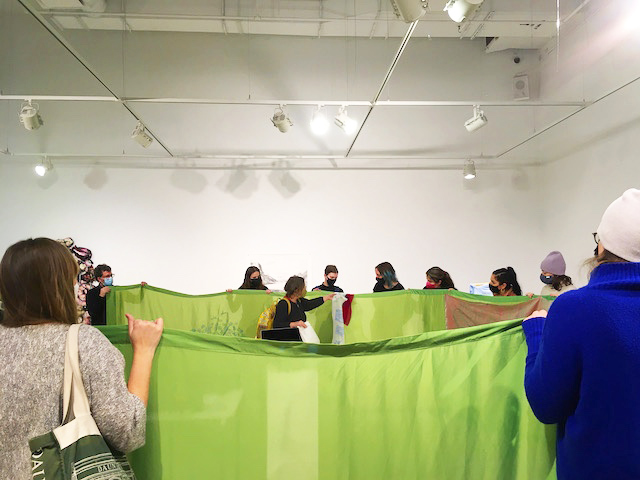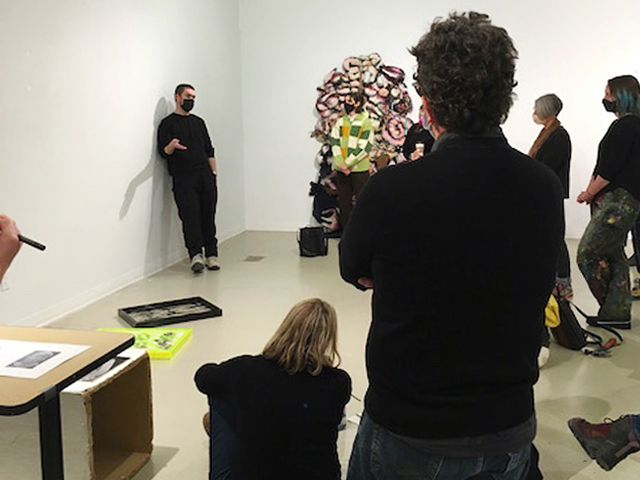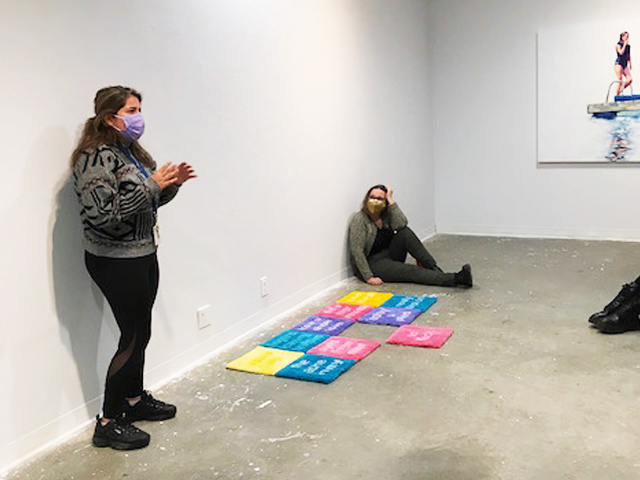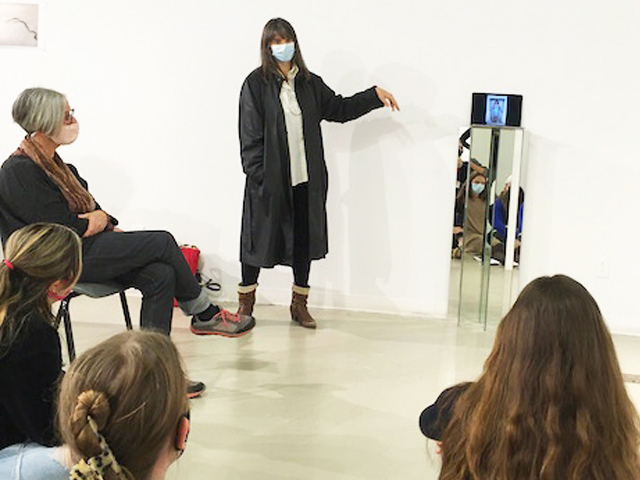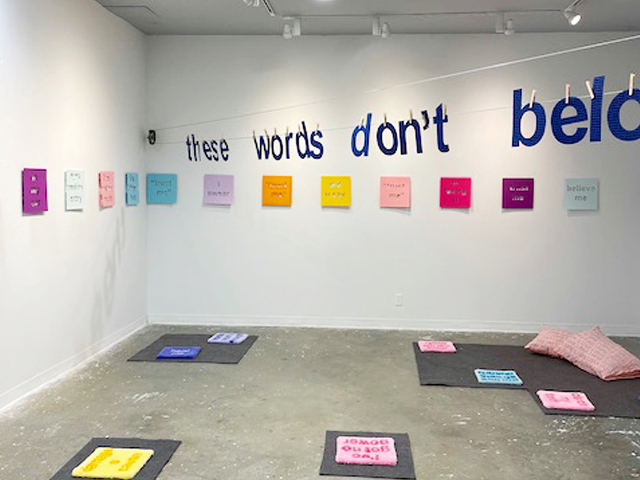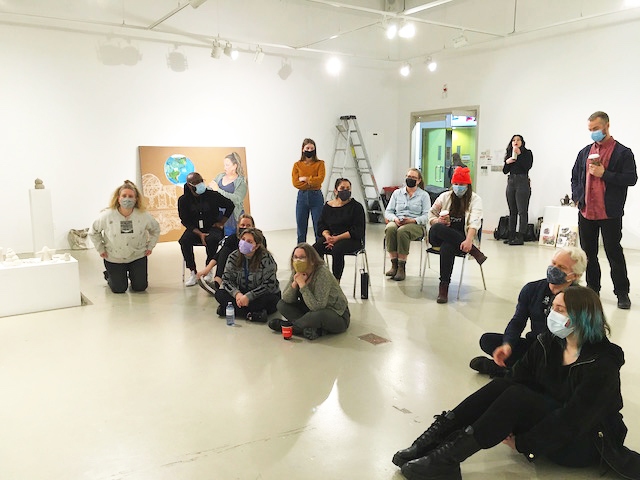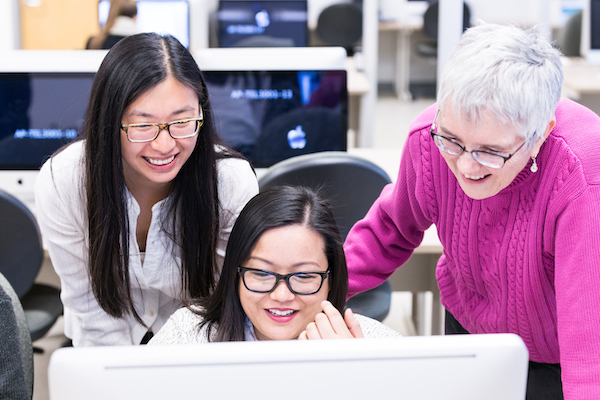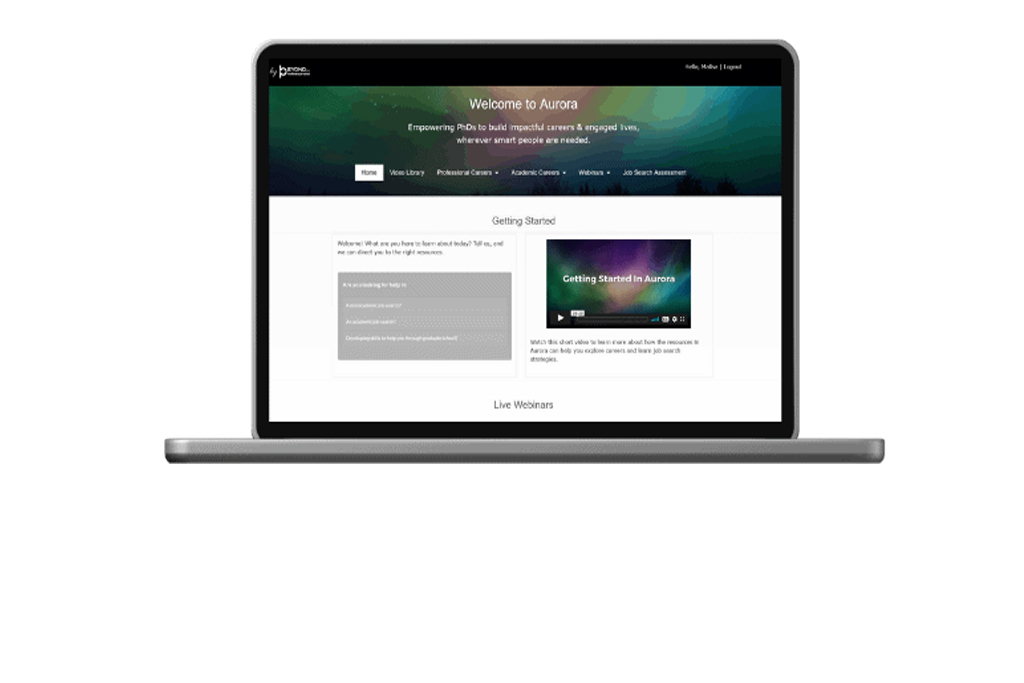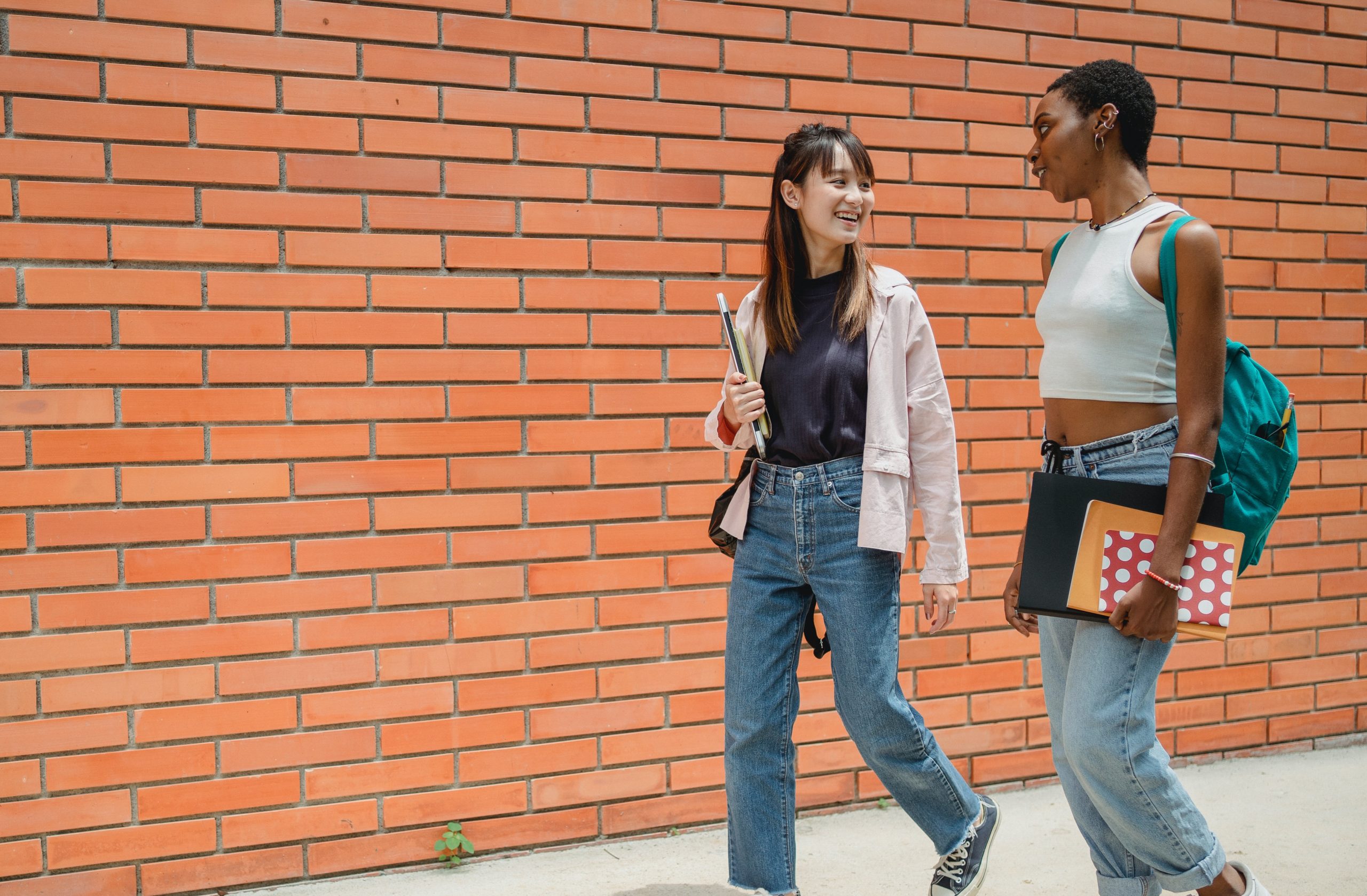16th Annual Goldfarb Summer Institute 2024
Detour and Access: Contemporary Diasporic Asian Art
Instructors: Hong Kal & Yam Lau
Contemporary diasporic Asian art is a vibrant and dynamic field that engages with a range of multifaceted issues, including the experiences of migration, the transmission of inter-generational memories, and the intersects of cultural identities, which require an interdisciplinary approach.
To gain a critical understanding of the complexity of contemporary diasporic art, this course will navigate through a constellation of key concepts, theories and individual practices associated with diasporic art. These include cultural hybridity, postcolonial conditions, transnational interconnectedness, intergenerational traumas, intersectional identities, speculative/imaginary utopias, deconstructing problematic notions of origin and belonging, decolonial interventions, and the often overlooked Asian and Indigenous relations.
The course is structured across eight sessions, each dedicated to an in-depth analysis of selected artists and related concepts. Each session will be enriched by guest speakers, including renowned scholars, curators, and artists, who will bring their expertise to class discussions. Furthermore, the course will feature two keynote public talks, providing critical perspectives on the significance of contemporary diasporic Asian art in our Canadian and global cultural landscapes.
15th Annual Goldfarb Summer Institute 2023
Abstract
Natasha Bissonauth & Tammer El-Sheikh
Summer Institute seminar titled Border Forms: (Re)Drawing lines
Many key art historians, artists, curators, and others thinking with the visual do so through anti-colonial discourse and critical race theory to disturb the White, colonial, Eurocentric roots that undergird the field and the residues that remain in the discipline. Consider for example, the region-specific genealogies so foundational to art history. What would it mean to trespass such borders? Where is the line? And by extension, how are the formal characteristics of a border generative in art making and art thinking? By emphasizing Black and Brown art histories that reorder and disorder the bordered logics of the discipline and that imagine possibilities for the visual beyond surveillance regimes, this seminar elaborates on the border as a political tool, a conceptual device, and an aesthetic gesture.
14th Annual Goldfarb Summer Institute 2022
Assemblage in Painting & Curatorial Practices
GS ARTH/VISA 6020.03; GS/VISA 6030.03
Professors Janet Jones and Michel Daigneault
Seminar meets online May 2 – 17, 2022
This intensive Graduate Visual Art and Art History Summer Institute will explore contemporary painting & curatorial practices within the expanded field of contemporary art and Art History.
Assemblage theory, as it relates to contemporary painting and curatorial practices will be the critical starting point for our discussions. Following the approach developed by Jane Bennett in Vibrant Matter, we will try to give a voice to the things and matters used by artists and curators and question how they converge and interfere with each other to form an assemblage. As an assemblage invites us to think of things as they are interrelated, rather than through their essence and autonomy, we will also examine Karen Barad’s concept of « intra-action » developed in her book Meeting the Universe Halfway.
Students in curatorial practice will be invited to eschew a thematic approach and reflect upon artworks as things that form the complex network of an exhibition. In a parallel manner, students in the studio program are invited to let things speak and explore the meanings generated between the parts of an artwork rather than only an expression of their subjectivity or a preconceived subject.
We will also look at the texts of two other authors associated with the Assemblage theory, Donna Haraway, Staying with the Trouble, and Manuel DeLanda, Assemblage Theory. These theorists will help us reflect upon the concept of assemblage as a process in order to bring forward the concepts of emergence, heterogeneity, decentering and ephemera.
Lastly, we will explore how the approach of assemblage can be used to examine, amongst others, the following questions, Does assemblage reconfigure the dialectic relationship between abstraction and figuration? How can painting, once defined by the handmade gesture, work from a digital image? Does assemblage offer a workable lens through which the artist and curator can examine the need to engage in a feminist and decolonial critique of art and cultural structures?
These questions will be examined through course readings and presentations, panel discussions, and individual studio visits/consultations by prominent curators, art historians, and artists. The invited guests will be drawn from the New York, Toronto, Vancouver and Montréal art communities.
MA / PhD Art History students will collaborate, as curators, with the MFA/PhD students, as artists, on the visualization, planning and realization of an exhibition to be held in the SPG and the Gales Gallery at the end of the Institute. An online catalogue of the exhibition will be produced that includes artists’ statements and essays on the work and exhibition by the graduate student curators and art historians.
13th Annual Goldfarb Summer Institute 2021
Photography: In and Out of the Archive
GS ARTH/VISA 6020.03; GS/VISA 6030.03
Professors Nina Levitt and Sarah Parsons
Seminar meets online May 3 – 14, 2021
Archives have traditionally been understood as the organic repositories of information generated by the business of institutions such as states, corporations, and other organizations. As such, archives occupy a position of official power and regularly serve as the basis for historical research and narratives. More recent critical thinking about archives challenges the possibility of organic collections or their neutrality, noting that archives always structure historical knowledge and often predetermine whose stories are entered into the official records. In official or institutional collections, archivists regularly make decisions about which documents offer information and evidence that would make them worth keeping. Increasingly, collectors, scholars, artists, and others have created and archived collections that now carry their own power.
As the digital era has vastly broadened access to archives and historical material, debates about their scope and power have shifted to the mainstream and into a wide range of fields. In particular, critics noted an “archival turn” in contemporary art and curatorial practice, specifically in relation to photography. Photographs have played a disruptive role in these debates prompting questions about just what kind of information photographs can provide and what kinds of photographs have been placed inside or kept out of archives.
With the assistance of esteemed guests, Summer Institute examines the ways artists, curators, archivists, and scholars have taken up questions of both material practice and representational politics in the archival context. Guests include:
- Krista Thompson, Mary Jane Crowe Professor of Art History and affiliated faculty in the Department of African American Studies and the Department of Performance Studies at Northwestern University whose current research examines notions of photographic absence, fugitivity, and disappearance in colonial and postcolonial Jamaica.
- Julie Crooks, Curator of the Arts of Global Africa and the Diaspora at the Art Gallery of Ontario and curator of a landmark upcoming exhibition of Caribbean photography.
- Sandra Brewster is a Toronto-based visual artist whose work explores identity, representation, and memory, centring on Black presence.
- Jacqueline Hoàng Nguyễn is a Stockholm-based artist who uses archives and a broad range of media to investigate issues of historicity, collectivity, utopian politics, and multiculturalism via feminist theories.
- Thy Phu, Professor of Media Studies at the Department of Arts, Culture, and Media at UTSC and Director of the Family Camera Network a collaborative research project that engages local communities in the building of an antiracist public archive through the collection and preservation of family photographs and their stories.
- Dustin Klein and Alex Criqui are Richmond, VA-based artists. Since June 2020 they have collaborated on “Reclaiming the Monument,” a series of still and moving images and text projected onto Confederate monuments.
- Gabrielle Moser, Assistant Professor of Aesthetics and Art Education, York whose current research focuses on photography, archives, and citizenship in post-war Canada.
The seminar will entail readings, seminars, talks, and virtual workshops, to support students as they develop their own focused research/curatorial/artistic projects. During the seminar, students will participate in discussions, present readings to the group, and will submit one written response during the two weeks of meetings. The remaining assignments will be submitted after the seminar meeting period.
The annual Joan & Martin Goldfarb Summer Institute in Visual Art offers York University graduate students and the wider community the opportunity to engage with prominent international theorists, artists, curators, and critics through seminars, workshops, and public lectures.
12th Annual Goldfarb Summer Institute 2020
In Practice
GS ARTH/VISA 6020.03; GS/VISA 6030.03
Professors Barbara Balfour and Jennifer Fisher
Seminar meets online May 25 – June 10, 2020
The 2020 Summer Institute aims to address diverse standpoints on aesthetic practice in ways that will be of interest to artists, art historians, curators, performers, and cultural theorists. While 'practice’ is a term used increasingly in academia, it remains somewhat elusive as a topic of investigation in itself.
In Practice will examine practice as a lens for the dynamic relationality, performativity, temporality and ethics of aesthetic expression and knowledge production. Whereas the study of art has tended to focus on objects and products, participants will be invited to focus on the aesthetics of practice as it involves the activation of contexts as well as diverse forms of agency and performativity. What does it mean to have or engage with a practice? In addition to meaning, how does practice simultaneously incorporate the body, affect and feeling? What are some possible manifestations of ‘practice-based research’ in art, curating and art history? In which ways can practice play a role in personal, political and cultural transformation? How are domains of practiced knowledge informed by corporeal and cognitive training? When might forms of practice stemming from feminist, indigenous, queer, curatorial, sensory, ethical and theoretical perspectives find a synthesis in creative production?
Participants will be invited to consider instances of practice in collaborative, feminist, contemplative and activist approaches that pertain to contemporary art and curating. The Summer Institute will consist of talks by trailblazing artists and curators, seminars, workshops and more informal dialogue with a range of local and international invited guests.
11th Annual Goldfarb Summer Institute 2019
Crossing the Line: Contemporary Extensions of Drawing as a Medium
GS ARTH/VISA 6020.03; GS/VISA 6030.03
Professors Dan Adler and Pamela Phatsimo Sunstrum
The Summer Institute "Crossing the Line" will critically interpret drawing practices as extensions of the medium. From culture to culture and era to era, the support of drawing has varied: paper, ground, wall, pottery, fabric, film, computer screen, and so on. Paying particular attention to artists' own conceptions of their drawing processes and their varied relationships to histories of the medium, this course is focused on contemporary practices that subvert or stretch conventional definitions of drawing.
Much has been made of the purported purging of authorial intentionality and subjectivity in the advanced art of the 1960s and 70s, which placed a heightened emphasis on analytic rigor, systematic planning, and serial methodologies. This move is often characterized as a “cool” reaction to the “hot” psychologically transparent practices and rhetoric of heroic individualism associated with modernist abstraction in the post-World War II era. The supposed shift from hot to cool—from gestural disclosure to rational, anti-authorial approaches—was, however, never definitive or clear-cut.
The Summer Institute will develop aesthetic models through which drawing may be interpreted in contemporary art, offering close readings of works that manage to critically carve out spaces—or strive to stake a claim—within hegemonic environments that prioritize spectacle and easy entertainment. Increasingly, we live in a world engaged in the ongoing management of individual attentiveness and the impairment of perception within the compulsory routines of contemporary technological culture. Against this backdrop, a drawing may be envisioned as a restorative withdrawal that is, in a partial sense, incompatible with the capitalist marketplace, which now operates through every hour of the day and night—pushing us into constant activity, eroding forms of community and political expression, and damaging the fabric of everyday life.

Learn More
The Graduate Program in Visual Art at York is an exciting environment to pursue innovative, socially engaging, career-ready education. Contact our Graduate Program Assistant to learn more.

